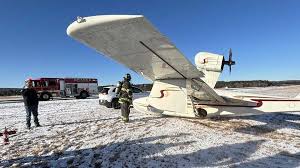Understanding Plane Emergency Landings and Their Importance

Introduction
Plane emergency landings are critical situations that require rapid responses from flight crews to ensure passenger safety. These incidents highlight the importance of aviation safety protocols and pilot training. As air travel continues to increase, understanding how emergency landings are managed becomes vital for passengers and the aviation industry alike.
Recent Incidents
In recent months, there have been multiple emergency landings reported across North America. For example, on September 15th, 2023, a commercial flight from Toronto to Vancouver had to execute an emergency landing at Calgary International Airport due to reported engine troubles. Passengers and crew remained unharmed, thanks to the professionalism of the flight crew and the effectiveness of safety procedures in place.
In another instance, a plane flying from Montreal to New York faced a bird strike shortly after takeoff, prompting the pilot to make an emergency return to Trudeau International Airport. These real-life scenarios underscore the unpredictability of air travel and the importance of having a robust emergency response system.
Passenger Preparedness
For passengers, understanding the protocols surrounding emergency landings can reduce anxiety and improve safety. Airlines typically include safety briefings before each flight that cover the use of emergency exits and the importance of following crew instructions. In addition, passengers are encouraged to familiarize themselves with the safety information card located in the seatback pocket, which outlines crucial steps to take during an emergency.
The Role of Technology
Advancements in aviation technology have significantly enhanced the safety of air travel. Modern aircraft are equipped with sophisticated systems that allow pilots to monitor the aircraft’s performance in real-time and make informed decisions quickly. For instance, advancements in engine design and redundancy systems have decreased emergency situations significantly, with a current ratio that shows one emergency situation per 11 million flights.
Conclusion
Plane emergency landings remain a critical aspect of aviation safety. Although they can be alarming, understanding the factors leading to these situations and the protocols in place helps to reassure passengers about their safety. With continuous advancements in aircraft technology and training, the frequency of emergency landings is likely to decrease further, paving the way for even safer air travel in the future. Passengers are urged to remain informed and calm, trusting that aircraft personnel are well-prepared to handle any emergency effectively.









